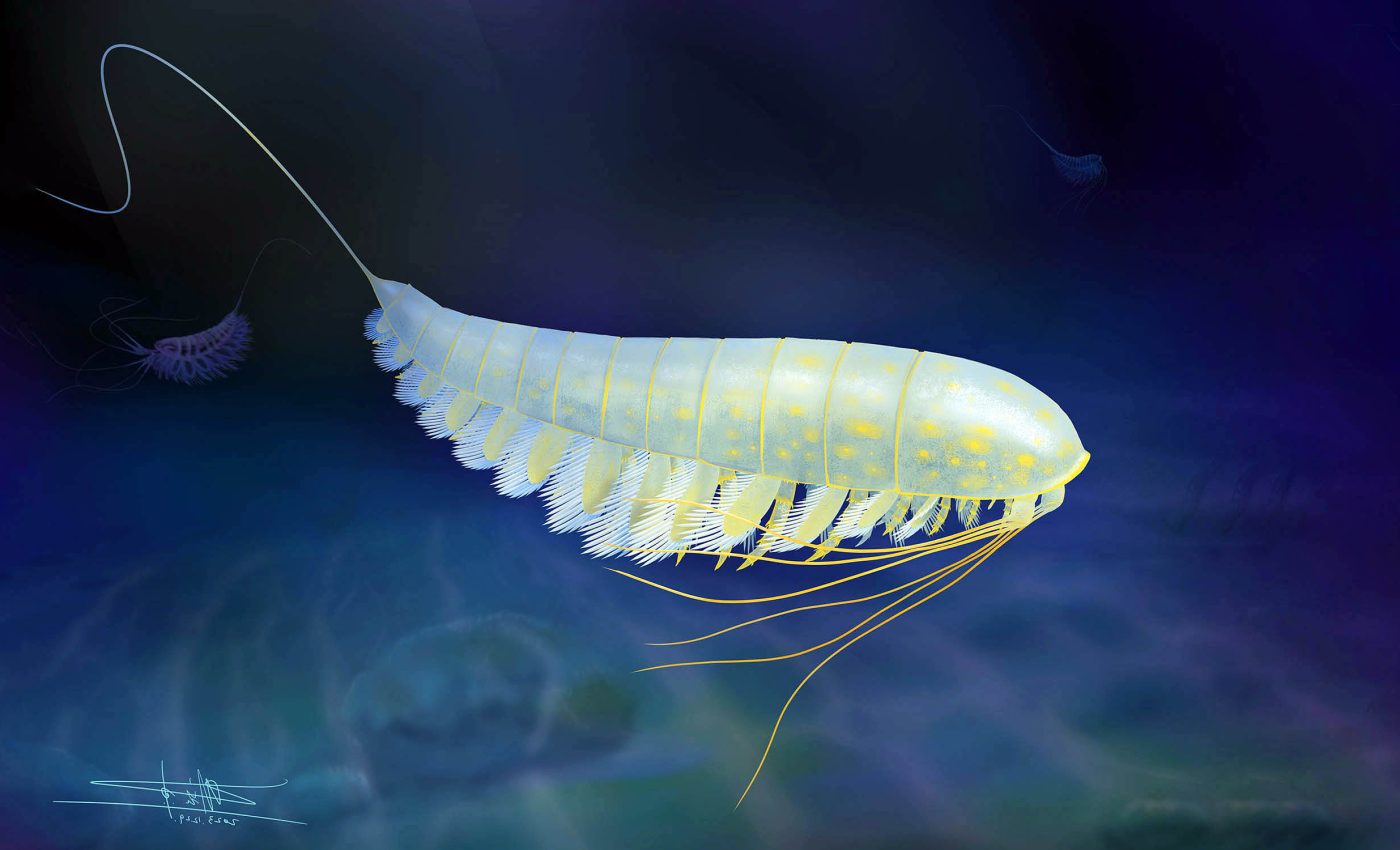
Golden fossil: 450-million-year-old arthropod found inside a block of fool’s gold
Researchers have unveiled an exceptional golden fossil from an ancient era. It is beautifully preserved and frozen in time, yet appears ready to spring into life at any moment.
This 450-million-year-old, 3D-preserved entity is not just any fossil. The original living animal came to rest where pyrite (fool’s gold) was present in the water, and this mineral entered the tissues, resulting in a fossil that glows golden.
A golden arthropod
“As well as having their beautiful and striking golden color, these fossils are spectacularly preserved. They look as if they could just get up and scuttle away,” noted University of Oxford Professor Luke Parry.
The specimen, a new species named Lomankus edgecombei, is related to spiders, centipedes, scorpions, and horseshoe crabs.
Intriguing origin and evolution
Lomankus belongs to a group of arthropods known as megacheirans, which are characterized by the presence of a large, modified leg – or “great appendage” — for seizing prey.
The Cambrian Period, which spanned between 538 and 485 million years ago, was rife with megacheirans. They were thought to be predators mostly, using their unusual great appendage to secure prey.
But most of the species died off and disappeared from the fossil record by the Ordovician Period (485 – 443 million years ago).
Golden piece of the arthropod puzzle
The discovery of Lomankus is like unearthing a golden piece of a giant puzzle — it provides crucial insights into the evolution of the specialized head appendages of arthropods.
All arthropods have one or more pairs of legs at the front of their bodies that are modified for special functions, like sensing the surroundings or catching prey.

Such appendages include the antennae of insects and crustaceans, and the pincers and fangs of spiders and scorpions.
“Today, there are more species of arthropod than any other group of animals on Earth. Part of the key to this success is their highly adaptable head and its appendages, that has adapted to various challenges like a biological Swiss army knife,” said Professor Parry.
Whip-like appendages for navigation
The head appendages of Lomankus tell an interesting tale. Unlike its megacheiran relatives who used their great appendages primarily for hunting, Lomankus had reduced claws and was equipped with long, whip-like feelers that could have had a sensory, rather than a predatory role.

Moreover, unlike other megacheirans, Lomankus didn’t seem to have eyes, suggesting it lived in the depths and relied on its front appendages to navigate around the sediment in the dark.
“Rather than representing a ‘dead end,’ Lomankus shows us that megacheirans continued to diversify and evolve long after the Cambrian, with the formerly fearsome great appendage now performing a totally different function,” said Professor Parry.
Intriguing features of Lomankus
Other intriguing features of Lomankus offer further evidence of its evolutionary journey and contribution to the existing fauna.
“These beautiful new fossils show a very clear plate on the underside of the head, associated with the mouth and flanked by the great appendages,” noted Professor Yu Liu from Yunnan University.
“This is a very similar arrangement to the head of megacheirans from the early Cambrian of China except for the lack of eyes, suggesting that Lomankus probably lived in a deeper and darker niche than its Cambrian relatives.”
A time capsule in fool’s gold
The fossil was discovered in a New York area famous for its “Beecher’s Trilobite Bed,” a unique rock layer that is rich in trilobites.
A hostile, low oxygen environment led to the remarkable preservation of these creatures by replacing their bodies with pyrite, or the glittering fool’s gold, resulting in stunning 3D fossils.
The pyrite-adorned treasures can be examined using a CT scan, which reveals hidden anatomical features preserved in exceptional detail.
Professor Derek Briggs, a co-author of the study from Yale University, noted that the fossils show how the rapid replacement of delicate anatomical features in pyrite (before they decay) preserves critical evidence of the evolution of life in the oceans 450 million years ago.
The study is published in the journal Current Biology.
Image Credit: Illustration by Xiaodong Wang
—–
Like what you read? Subscribe to our newsletter for engaging articles, exclusive content, and the latest updates.
Check us out on EarthSnap, a free app brought to you by Eric Ralls and Earth.com.
—–













